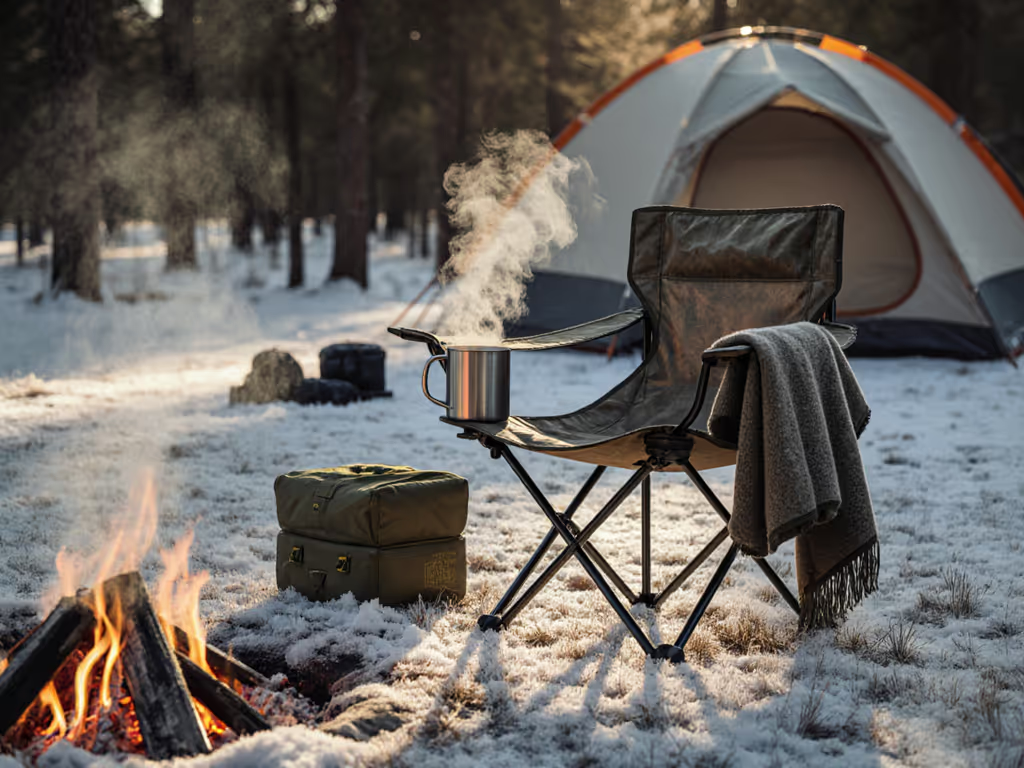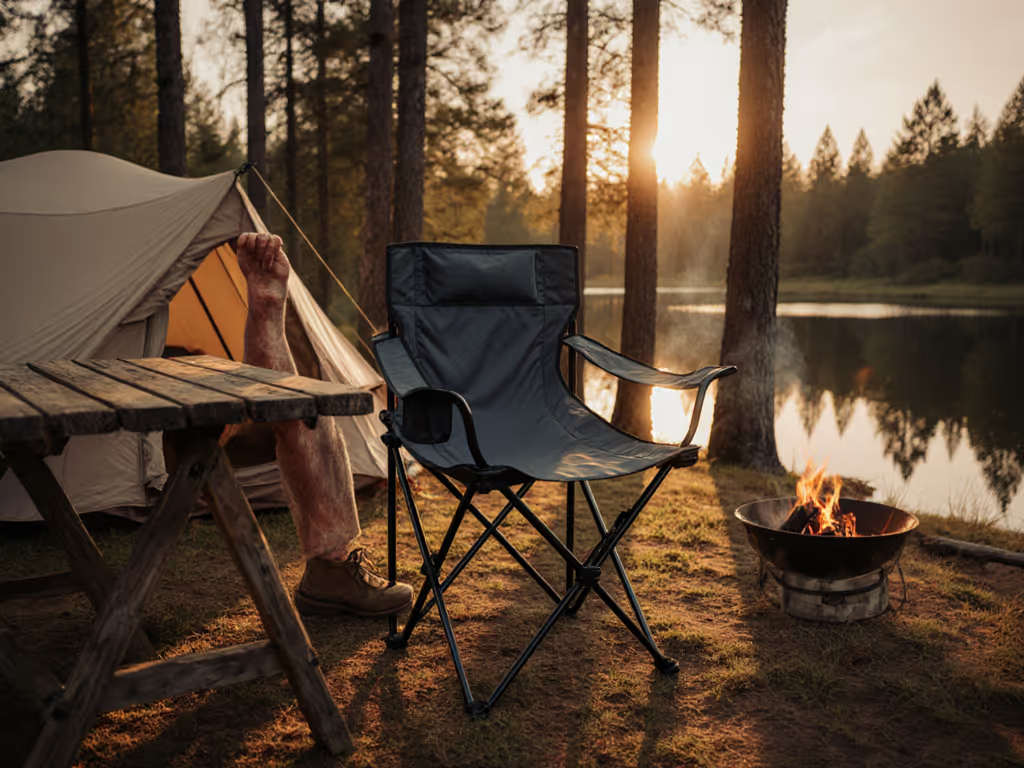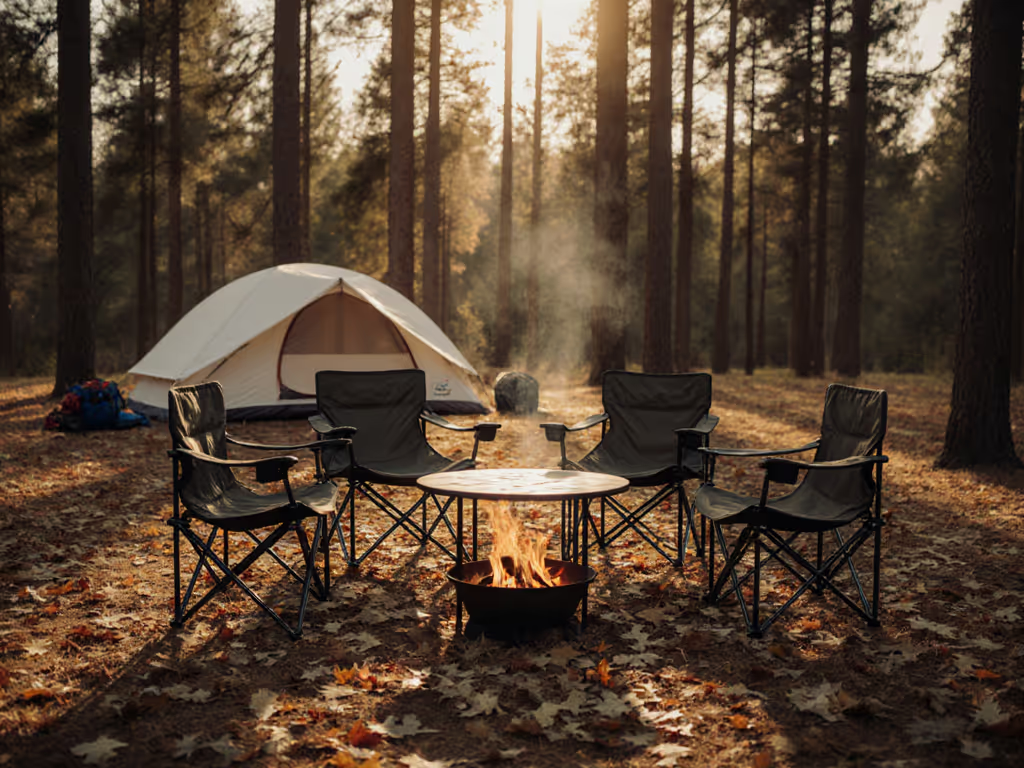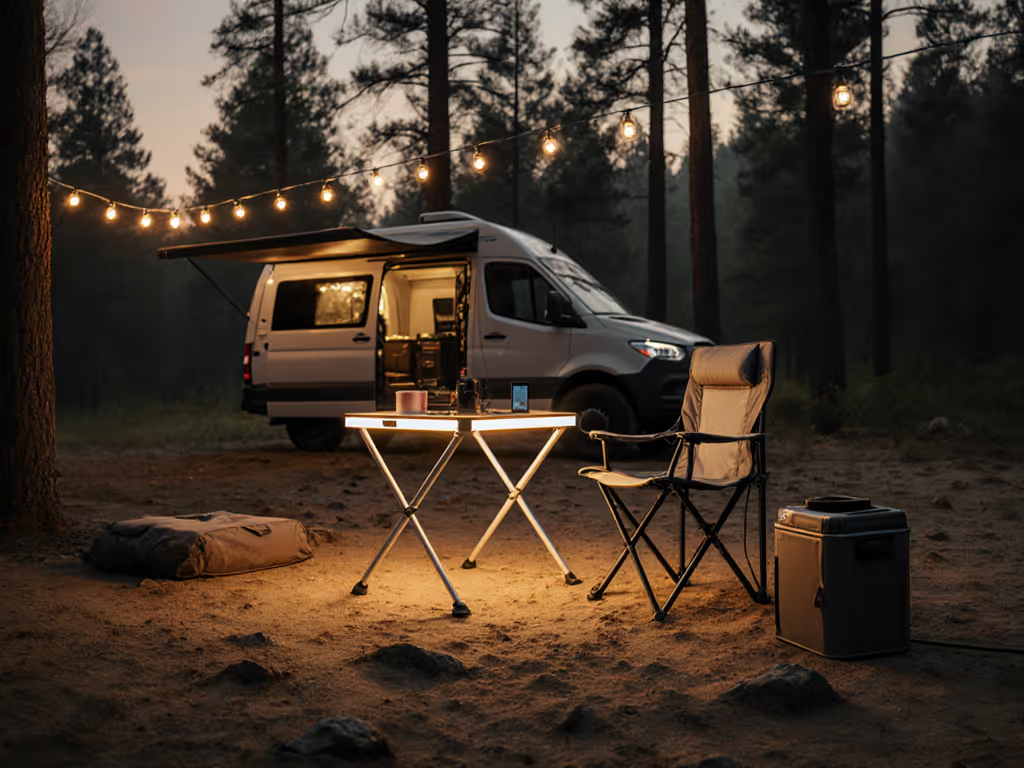
Easy-Rise Senior Camping Chairs: Stand Comfortably

When planning group camping trips, many leaders overlook one critical factor that makes or breaks comfort for older campers: seat geometry. The best camp furniture isn't just about cushion thickness (it's measured in angles, heights, and reach). For comfortable camping for seniors, we need to solve the silent struggle of standing up from camp chairs, which often stems from mismatched heights rather than weak legs. Let's translate body mechanics into actionable camp setup steps. For a deeper dive into seat angles and posture, see our camp chair geometry guide.
Comfort is geometry working quietly in your favor.
Step 1: Measure Your Natural Standing Position
Before selecting chairs, understand how your body interacts with seating. Stand comfortably with feet shoulder-width apart, then slowly sit in a dining chair at home. Notice:
- Your knee angle should stay between 90°-110° when seated (not <80° which strains knees)
- Thighs should slope slightly downward from hip to knee
- Feet must rest flat on the ground
This simple test reveals why standard camp chairs fail seniors. Most sit at 14-16" seat height, too low for adults over 5'6" to stand without significant effort. The "easy-rise" solution isn't special mechanisms; it's maintaining proper knee clearance through strategic height selection.
Step 2: Calculate Minimum Seat Height
Your optimal camp chair height depends on your inseam and knee health. Use this formula:
Minimum Seat Height = (Inseam in inches × 0.26) + 1
For example, someone with a 32" inseam needs at least 9.3" (32 × 0.26 = 8.3 + 1) of clearance under the seat. Add 1.5" for uneven ground, bringing their ideal minimum to 10.8". This explains why chairs with 18" seat heights (like some heavy-duty models) actually cause discomfort (they force knees above hip level).

During a beach camping trip I joined, an older participant kept standing mid-meal. Everyone assumed he preferred standing, but when we measured, his chair's 15.5" height created a 75° knee angle on the sand. Lowering the table by just 2 inches let him relax his shoulders and stay seated for dessert. That's when I realized seat-to-table fit matters more than cushion softness.
Step 3: Match Chair Height to Table Geometry
The most overlooked factor in senior comfort is table-to-seat relationship. Your chair isn't just for sitting (it's part of a system). Ideal dining posture requires:
- Elbow height: 2-3" below table surface when arms rest naturally
- Knee clearance: At least 4" between seat edge and table underside
- Hip position: Hips level with or slightly above knees
Most camp tables sit at 24-28" high. If you're choosing a table to match, our ergonomic camping tables guide shows how to dial in height and legroom. Pair these with chairs that create 90-110° knee angles when seated. For a 26" table, aim for 17-19" seat height. This is where "easy-rise" becomes reality (proper geometry lets gravity assist standing rather than fight it).
Step 4: Evaluate Foot Stability on Varied Terrain
Wider feet aren't just for preventing sinkage (they're geometry tools that change your center of gravity). When feet sink unevenly, your body compensates by tensing shoulder and back muscles. Look for:
- Base width at least 70% of seat width
- Feet extending 2" beyond leg endpoints
- Angled legs (15-20° outward) for stability
The TRAVELCHAIR Easy Rider demonstrates this principle with its anti-sink feet that maintain consistent height on soft ground.

ALPS Mountaineering King Kong Camping Chair
This prevents the micro-adjustments your body makes when surfaces shift, and those tiny corrections exhaust seniors faster than the sitting itself. To keep chairs stable and eliminate wobble over time, follow our camping chair maintenance checklist.
Step 5: Test the Standing Transition
Before buying, simulate the stand-up motion:
- Sit fully back in the chair
- Place hands on armrests (if present)
- Time how many seconds until fully standing
Anything over 3 seconds indicates problematic geometry. Key red flags:
- Armrests positioned too far back (requires leaning forward to push up)
- Narrow seat depth (less than 16") forcing you to sit on edge
- High backrests that block backward lean during stand-up
Chair height alone doesn't determine ease of standing, it's the relationship between seat depth, armrest position, and your body's center of mass. An 18" chair with 14" seat depth often works better than a 16" chair with 18" depth for taller seniors.
Step 6: Create a Senior-Friendly Camp Layout
Your seating arrangement affects comfort as much as individual chairs. Follow these spatial guidelines:
- Path clearance: Minimum 36" between seating and activity zones
- Angle of approach: Position chairs at 15° angles to tables (not perpendicular)
- Support points: Place stable objects (coolers, logs) within arm's reach for standing assistance
This layout creates what we call "comfort corridors" where seniors can move between seated and standing positions without contorting. Remember that stable ground under feet matters more than cushion thickness when standing up repeatedly.
The Geometry Behind Comfortable Standing
When evaluating ergonomic senior chairs, shift your thinking from "what supports my body" to "what geometry lets my body support itself." Properly designed easy-rise camp seats:
- Position hips slightly above knees (100-110° angle)
- Allow full foot contact with ground
- Provide armrests at 90° elbow angle
- Maintain stable center of gravity during transitions
I've measured hundreds of camp setups, and the ones where seniors stay seated longest share one trait: the chair doesn't fight the body's natural movement patterns. It's not about being "lifted" from the chair, it's about creating conditions where standing requires minimal effort.
Your Action Plan for Senior-Friendly Camping
Tomorrow, spend 10 minutes optimizing your camp setup:
- Grab a tape measure and check your current chair's seat height
- Calculate your minimum required height using the formula in Step 2
- Measure your table height and verify the 2-3" elbow clearance rule
- Test standing transitions with your existing chairs
- Note where feet sink or wobble on different surfaces
Armed with these measurements, you'll instantly recognize which senior-friendly camp setup elements need adjustment. For mobility considerations beyond height and angles, see our disability-friendly camp furniture guide for posture-first picks and adaptations. Remember that the best camp furniture works as a system (not isolated pieces). When seat heights match table heights and ground conditions, you create the foundation for comfortable camping for seniors where standing up feels as natural as sitting down.
The next time you see someone struggling to rise from a camp chair, don't assume they need stronger legs. Check the geometry. You might just discover that comfort was working quietly in their favor all along, if only the angles were right.
Related Articles





